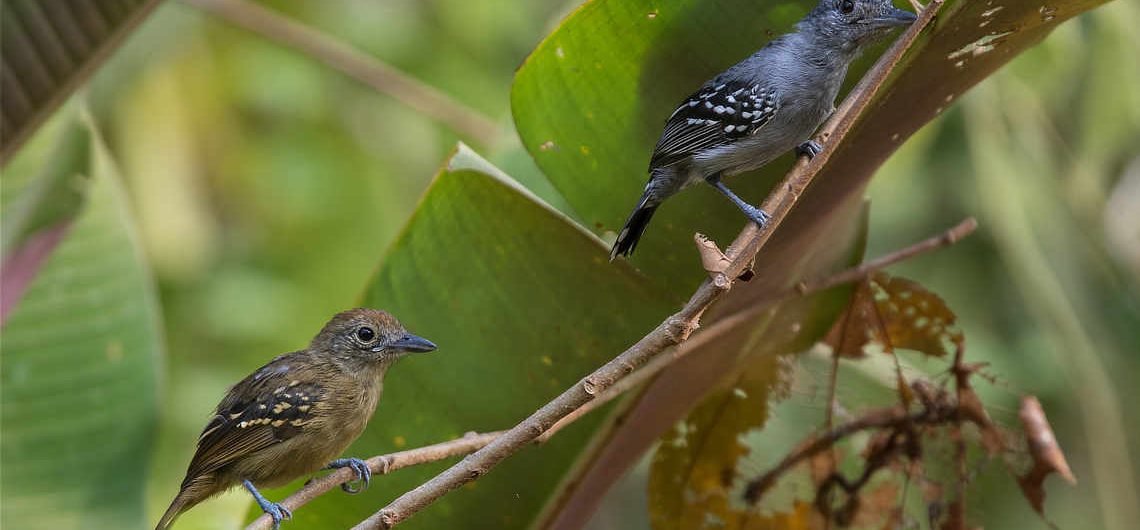Black-crowned Antshrike
Thamnophilus atrinucha
Formerly known as Western Slaty-Antshrike, this medium-sized antbird is a common resident of the lowland forests of Panama. It is a true antbird in the family Thamnophilidae, a large and diverse family of Neotropical birds. The male is mostly gray in plumage with a black crown and bold white spots on shoulders and tip of tail. The female is similar to the male but brown overall in coloration.
Black-crowned Antshrikes are bold and inquisitive. They forage, often in pairs, in the lower levels of the forest and forest edges, occasionally climbing into the canopy, and often with mixed feeding flocks of antwrens if passing through their territory. They will also forage with army ant swarms within their territory, but they stay on the periphery of the swarm. They are insectivorous, and catch a wide variety of arthropods (and occasionally small lizards) with their fairly thick, hooked bill. They forage by gleaning, reaching, sallying at live and dead leaves, and will also forage in leaf litter on the forest floor. A pair defends their territory aggressively year round; aggressive displays involve exposing the white patch on their back (as many antbirds do) and movements from side to side, giving a snarl call. They will often physically fight with each other. Disputes are settled by singing. They are quite vocal, singing throughout the day and and make a variety of nasal call notes, trills and accelerating rolls, often with a sharp, accented last note.
Black-crowned Antshrikes form long-term pair bonds. They have long breeding seasons, small clutch sizes, extended parental care and delayed dispersal of young. Nests can be found at any time of the year, but peak breeding season is April-June. The nest is an open cup fastened in the fork of tree branches. The female lays 2 whitish eggs with reddish-brown spots per clutch. Both male and female incubate the eggs, and after 16 days the eggs hatch synchronously. Nestlings remain in the nest for 10 days, and then fledge. When they fledge, they are rather helpless and remain immobile and very dependent on the parents. The male cares for fledgling #1 and the female cares for fledgling #2. After 2 weeks, the young are more mobile and travel with the parents. Young will often remain with parents for extended time, even after independence is reached.
The Black-crowned Antshrike is very common on the Caribbean Slope and eastern Pacific Slope of Panama, from lowlands to 900 m. It ranges through tropical America from Guatemala and Belize to northern Colombia and Venezuela, down the western side of the Andes through Ecuador and into northwest Peru.
Despite formerly being clumped into the lineage of “slaty antshrikes”, the sister species to the Black-crowned Antshrike is the Black-hooded Antshrike of Central America Caribbean Slope, found in Costa Rica and Panama.
Names, names: The genus Thamnophilus in Latin means “shrub-loving”, relating to their preferred habitat type.

